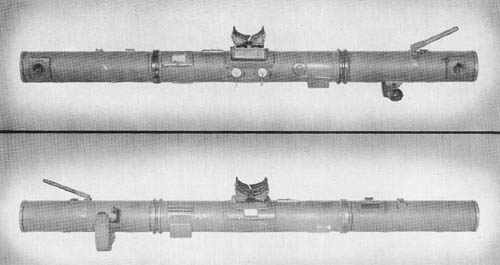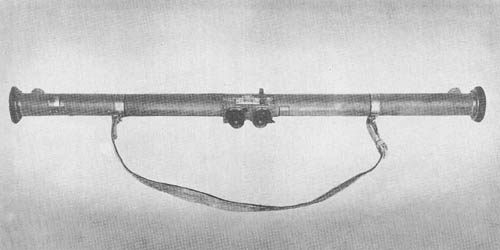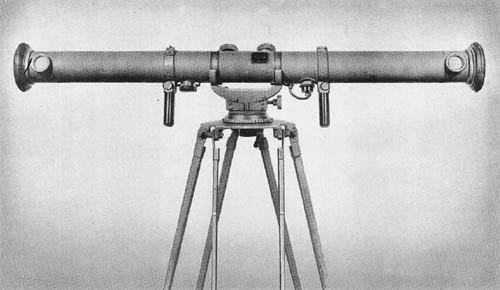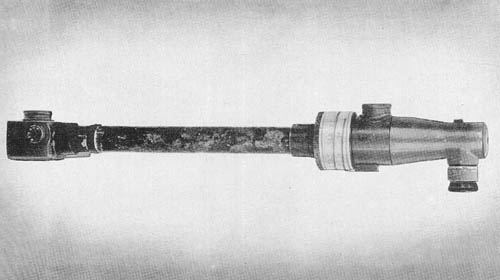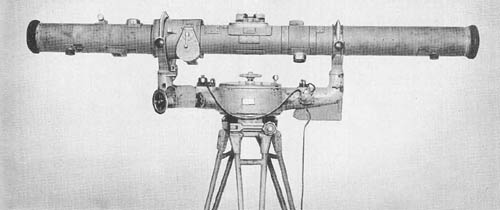
While primarily designed for use by antiaircraft batteries, a range finder of this type may be used by artillery units for determining horizontal as well as vertical range. The eyepieces are of the focusing type. Interpupillary distances may be set to suit the individual observer by means of a lever located on the right eyepiece. The eyepiece assembly also contains two ray filters.
The instrument consists of three major assemblies which are: the Range Finder Table, the Cradle, and the Tripod assembly. The outer tube is made of seamless steel tubing and has seven openings for adjustments. In addition, there are other openings for the eyepiece assembly, wedge windows, infinity correction lens assemblies, range knob, height of image knob, correction wedge assembly, range drum window, and reticle light windows. The optical bar is made of seamless machined steel and represents better machine work than most Japanese fire control instruments.
SPECIFICATIONS
| Power | 20 diameters | |
| Field of view | 2° 15′ | |
| Interpupillary setting | 56 mm to 74 mm | |
| Diopter adjustment | +2 to -4 | |
| Limits of range measuring | 400 to 20,000 yds. | |
| Base length | 2 meters | |
| Overall length | 7 ft., 5 5/8 ins. | |
| Weight | 201 lbs. | |
| Cradle | ||
| Overall length | 36 ins. | |
| Distance between trunnions | 34 11/16 ins. | |
| Height | 23 ins. (approx.) | |
| Weight | 162 lbs. | |
| Tripod | ||
| Overall height | 32 ins. | |
| Weight | 100 lbs. |
Japanese: p. 183 (March 1, 1945)
